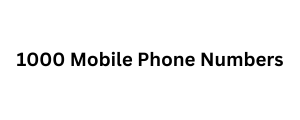Surely you have noticed: just yesterday you were discussing a topic with your friends, and today it appears on your social networks. No, it is not magic. It is targeted advertising – an almost magical tool that helps businesses and clients find each other. We tell you how it works and how you can use it yourself.
What is targeted advertising
Translated from English, target means “goal”. The target of targeted advertising is users who are interested in a particular product/service. That is, targeted advertising is a tool that allows specialists to show their advertisements to a strictly defined category of users. Target is very effective and relatively cheap – because you can only pay for ad impressions, and show only to those people who are really thinking about making a purchase.
A WhatsApp number database usually includes phone numbers linked to active WhatsApp accounts. Businesses often use these databases for marketing, outreach, or customer support. However, it’s important to remember that using these whatsapp number database databases without people’s permission can break privacy laws like GDPR and TCPA, which can lead to legal issues. WhatsApp also has strict rules against spam and unwanted messages, so businesses need to follow these rules and get clear permission before sending any marketing messages.
“The main advantage of targeting is that the result can be assessed immediately. At the same time, it is not necessary to have a pumped-up account: potential clients can be led from social networks directly to the site.” Targeted advertising allows you to achieve several goals at once: bring together the entire target audience using a particular social network; quickly and effectively tell about the product; encourage users to visit the site to learn more about the product; motivate to perform a target action: purchase, application, subscription, registration, and so on. Impressive, right? That’s why they say that businesses need to order targeted advertising – it’s one of the key tools for increasing marketing performance.
What is the difference between contextual and targeted advertising
Do you have a feeling that you have heard this somewhere? You are right. There is another type of advertising that is often confused with targeting – contextual advertising. But there is a difference between targeting and them. Is advertising in Yandex, Google and their partner sites. With its help, launched ads are shown after the user has entered a specific query that is close in topic to your ad. That is, in this case, the ad is as relevant as possible and is shown at the right time in the right place.
Retargeting is a tool that allows you to show ads to people who have already interacted with your company: visited its website, downloaded a mobile app, explored social networks. As a rule, the cost per click of a retargeted ad is lower than a regular one, and the cost per customer is lower as a result: you are addressing an already “hot” audience.
How Targeted Advertising Works
Where do social networks and other platforms get so much information about the user? The answer is simple: the user shared this information himself. Remember your account, for example, on VKontakte. You probably have your does your business website contribute to business development? hometown listed, right? What else? Your gender and age, the university you attended, your marital status and interests. Add geolocation to the list, for example, and the social network tracks your movements and, based on them, concludes that you are a homebody or a traveler. And it gets even better. If you often travel to other countries, then most likely you have a high income and a relatively flexible work schedule. It’s that simple.
What data does targeting collect
We can say that targeted advertising starts with the user who registers on the social network. Then the platform collects all of his data, analyzes it and groups it into several target categories. Demographics include nationality, economic status, gender, age, education level, income level, and employment. These parameters are usually determined first – they are the most obvious. For example, maternity clothes are bought mainly by women under 40, and menopause medications – from 45 years and above. Psychographics are values, attitudes, opinions, lifestyle and interests.
If a user is subscribed to several music groups and often goes to concerts. It means he will look for something else from this and you can big work offer him this too. Behavioral – reflected in the browser history, purchases and other recent actions on the site. For example, a user recently bought a new iPhone or planned to take out a loan and studied the best offers . All this can be useful in setting up advertising.
What are the types and formats of targeted advertising?
Even within one platform, there can be several types of targeted advertising: text, text and graphic, native posts, banners, carousels… There are many formats, and all of them can be effective, so they require testing . Only in practice can you understand which option will appeal to your audience more. Let’s look at some examples of different advertising formats. Social networks often offer similar types of advertisements, and you will probably recognize them right away. For example, a common technique is an advertising post on a social network. With proper targeting, such a post can look native; sometimes users don’t even realize that it is an advertising post.
It benefits the consumer, which means it attracts the target audience. If a person spends several weeks or even months looking for the most advantageous offer. And then the social network recommends a suitable option to him, the user is happy and gratefully accepts the recommendation.


